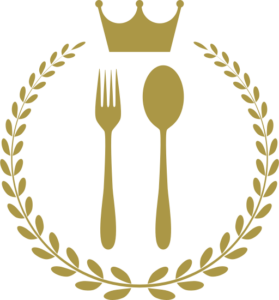What Is Rye Bread? The Ultimate Guide To The Grainy, Crusty Bread You’ve Been Missing Out On
Rye bread, with its distinctive earthy flavor and hearty texture, has been a culinary staple for centuries. Its versatility extends beyond its classic role as a sandwich bread, making it an ideal accompaniment for a wide range of dishes. In this comprehensive guide, we will explore the culinary possibilities of rye bread, answering the question: “What is rye bread eaten with?”
Rye Bread: An Overview
Rye bread is made from rye flour, which is milled from the whole rye grain. This gives it a darker color and a denser texture compared to wheat bread. Rye flour is also higher in fiber and nutrients, making rye bread a healthier choice.
Accompaniments for Rye Bread
The robust flavor of rye bread complements a variety of foods, both savory and sweet. Here are some of the most popular accompaniments:
1. Soups and Stews
Rye bread is the perfect accompaniment to hearty soups and stews. Its dense texture soaks up the flavorful broth, creating a satisfying and filling meal.
2. Salads
Rye bread croutons add a crunchy texture and earthy flavor to salads. They can be tossed with fresh greens, grilled vegetables, or fruit for a refreshing and flavorful dish.
3. Sandwiches
Of course, rye bread is a classic choice for sandwiches. Its sturdy texture holds up well to fillings, and its earthy flavor complements a variety of meats, cheeses, and vegetables.
4. Breakfast
Rye toast is a delicious and filling way to start the day. Top it with your favorite spread, such as butter, jam, or cream cheese, for a satisfying breakfast.
5. Appetizers
Rye bread can be cut into small squares and served as an appetizer with dips, spreads, or cheese. Its earthy flavor will balance out the richness of the dips and spreads.
6. Desserts
Rye bread can even be incorporated into desserts. Rye bread pudding is a comforting and nostalgic dish that combines the flavors of rye bread, milk, and spices.
7. Snacks
Rye bread is a great snack on its own or paired with a simple spread. Its dense texture and earthy flavor will keep you feeling satisfied between meals.
Culinary Inspiration
In addition to the classic accompaniments listed above, rye bread can also be used in a variety of creative and innovative ways. Here are a few ideas:
- Rye bread stuffing: Add rye bread cubes to your favorite stuffing recipe for a flavorful and hearty twist.
- Rye bread breadcrumbs: Use rye bread breadcrumbs to coat chicken, fish, or vegetables before frying for a crispy and flavorful crust.
- Rye bread pancakes: Create hearty and flavorful pancakes by adding rye flour to your pancake batter.
- Rye bread pizza crust: Use rye bread dough as a pizza crust for a unique and delicious twist on the classic dish.
- Rye bread croutons: Make your own rye bread croutons by cutting rye bread into cubes and toasting them in the oven.
In a nutshell: Exploring the Culinary Possibilities of Rye Bread
Rye bread is a versatile and flavorful bread that can be enjoyed in a variety of ways. From classic accompaniments to creative culinary creations, the possibilities are endless. Embrace the earthy flavor and hearty texture of rye bread and discover its endless culinary possibilities.
Frequently Asked Questions
Q: What is the difference between rye bread and wheat bread?
A: Rye bread is made from rye flour, which gives it a darker color and a denser texture. It is also higher in fiber and nutrients than wheat bread.
Q: Can rye bread be used for sandwiches?
A: Yes, rye bread is a great choice for sandwiches. Its sturdy texture holds up well to fillings, and its earthy flavor complements a variety of meats, cheeses, and vegetables.
Q: What are some creative ways to use rye bread?
A: Rye bread can be used to make stuffing, breadcrumbs, pancakes, pizza crust, and croutons. It can also be added to salads, soups, and stews for a flavorful and hearty addition.
